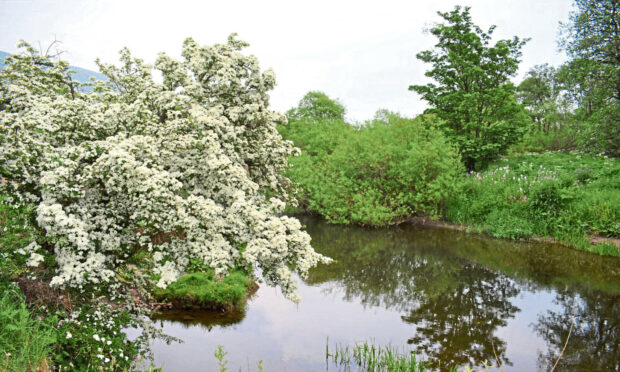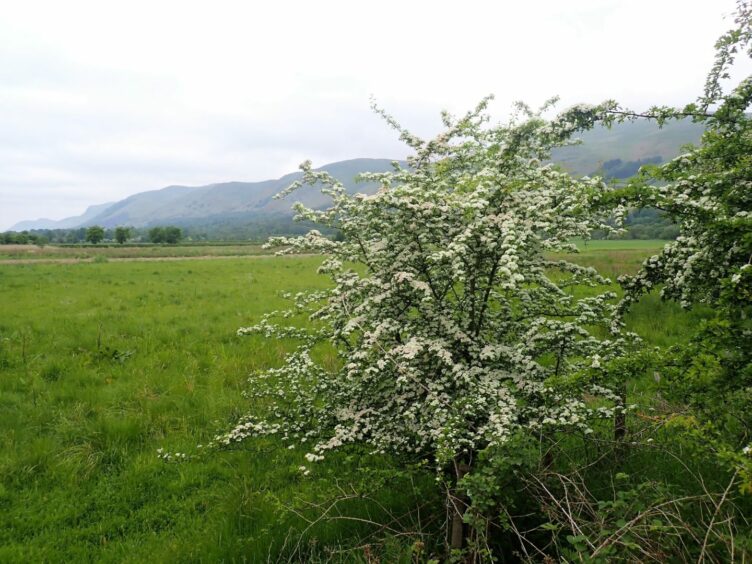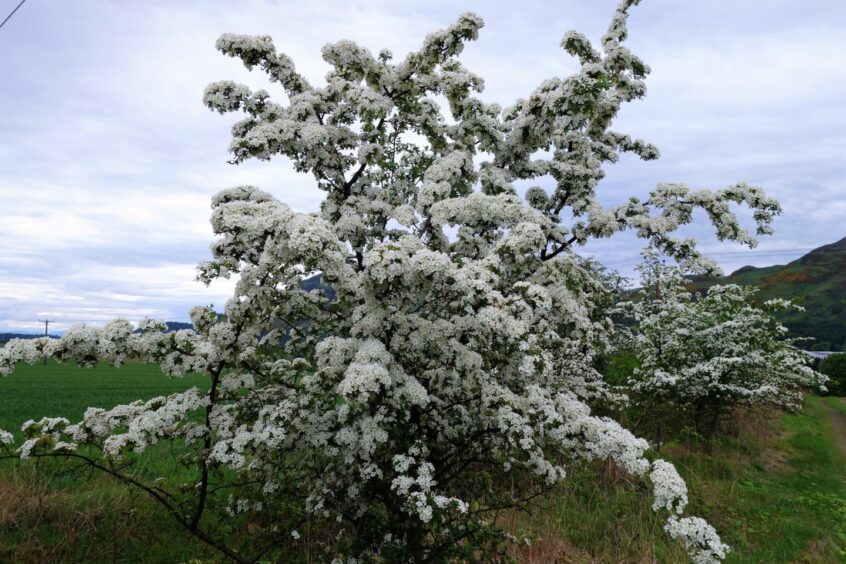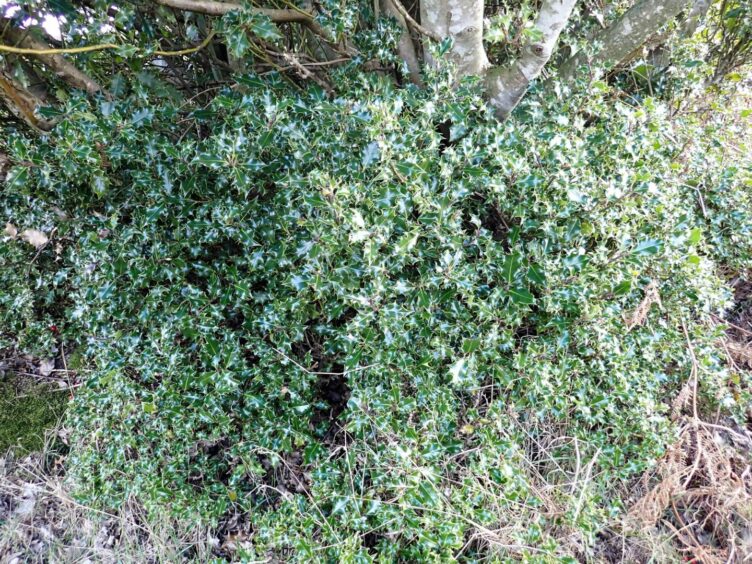The hawthorn blossom was magnificent during May and early June – a white-sparkled blanket of joy that brightened hedgerows and field edges as if dusted by a magical sprinkling of snowflakes.
The hawthorn can be fickle in its flowering, some years prolific and inspiring, in others less so, and the amount of blossom is probably dependent on external factors such as the temperature in late winter and spring.
Individual trees also seem to have their own flowering idiosyncrasies – some always verdant with blossom, while others are more sparsely adorned.
The hawthorn is a bedrock of the countryside, underpinning so much other life throughout the year.
In early spring, the emerging limey-green leaves are a vibrant herald for the season of renewal, while the startling white flowers that quickly follow are an irresistible lure for pollinating insects.
During summer, the leaves are an important food source for a range of moth caterpillars, as well as shieldbugs, while the thick thorny cover provides a haven for birds to nest.
In autumn and winter, the crimson haws are avidly sought out as source of sustenance by blackbirds, redwings and fieldfares as they enthusiastically strip the branches bare.
Wood mice and bank voles scamper on the ground below as they feast upon the rich bounty of haws that lie scattered on the cold winter soil.
Hawthorn has for many centuries been widely used by farmers as hedging to secure their fields and mark boundaries.
It is also a tree shrouded in superstition. It is believed, for example, that taking blossom covered branches into a house will bring bad luck, possibly because the stale smell of the flowers resembles the odour of decaying flesh.
In herbal medicine, an infusion made from the flowers is said to be good for treating heart and circulatory problems.
The young leaves are a useful addition to salads, and the haws can be used to make wine, jelly and add flavour to brandy.
While the hawthorn is also known as the May-tree in reference to its time of flowering, it is in truth a tree for all seasons – elegant and bounteous, and forever willing to share its riches.
Another tree I hold in similar reverence is the holly.
I’m especially drawn to the lone hollies that occur in the hills, and I stumbled upon one near Glen Dye in Aberdeenshire recently which had a adopted a most impressive defence system.
Holly leaves on the lowermost part of the tree are typically pricklier than those higher up as a means of protection from grazing – but this holly had taken things a step further.
It had developed an impressively thick bushy growth of unusually spikey leaves around the base of the trunk as a deterrent to deer, which acted like an impenetrable barrier.
I wondered what had prompted this holly to bear such an unusual growth – and can only presume that the impact of grazing had stimulated a biochemical reaction within the tree that spurred it to sprout forth its formidable ring of steel.













